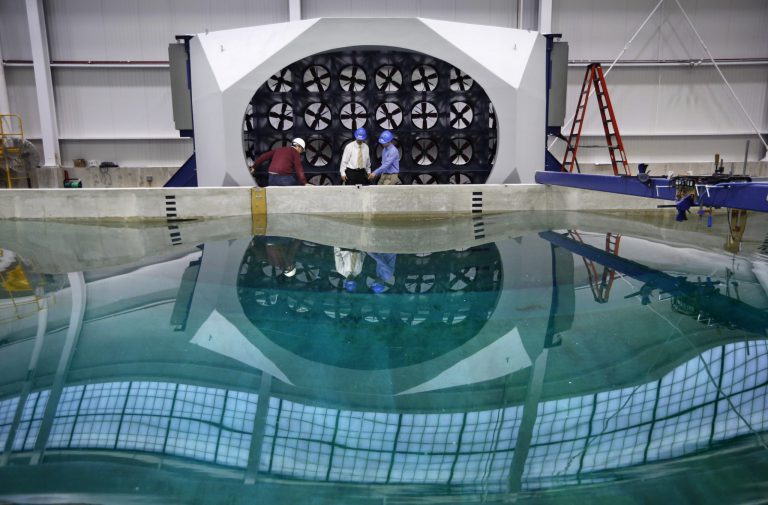
The University of Maine has revealed a $13.8 million expansion of its Advanced Structures and Composites Center that will simulate a stormy Ocean to help innovators discover whether their creations can withstand the sea.
The Center’s Director, Habib Dagher, says the indoor facility will be able to simulate waves over 100 feet tall and winds of more than 200mph. The University held a special ceremony yesterday in which the facility was unveiled.

Via AP Images.
The man-made Ocean took six years to construct, and features a 100-foot pool that uses 32 fans and 16 paddles to generate wind and waves.
“It’s really advancing society by better understanding the Ocean – the way things survive in the Ocean,” said Dagher.
The Director also claims that the W2 Ocean Engineering Laboratory will test the strength of everything from ships and ports to offshore wind turbines.

Via AP Images.
Dagher also mentions the possibility of places like Maine, Portland and New York City being able to use the indoor Ocean to test the impact of sea level rise. The facility can use models of coastal cities such as these to help test potential protective measures.
The facility was funded via a combination of public and private grants, and is located at the University’s campus in Orono.
According to Dagher, the facility is already attracting interest from builders who are keen to test a model of a facility that would harness energy from waves. Half-a-dozen businesses are due to use the indoor Ocean over the next few weeks.

Via AP Images.
“We’re already getting calls from a lot of wind energy folks. There’s no facility that can do this right now,” says Anthony Viselli, the Manager of the facility and project manager of its equipment’s construction. “Technology like this will be of significant value going forward in attracting other companies to our state that are in that industry.”
Image via AP Images.
Liked this? Then you’ll love these…
Castleton University Still Hunting for Missing Mascot
Scientists from Brown University Discover How Bats Land Upside Down







